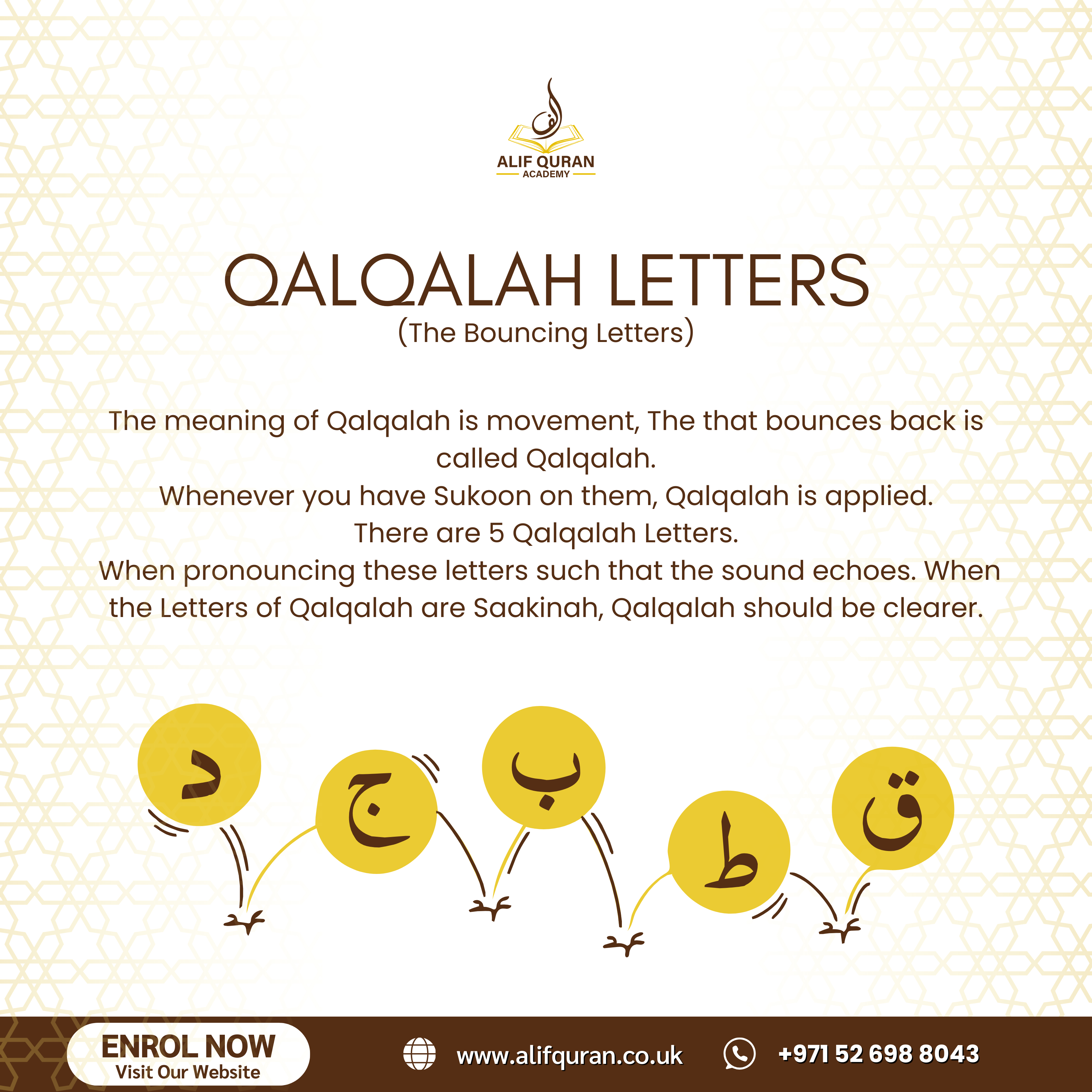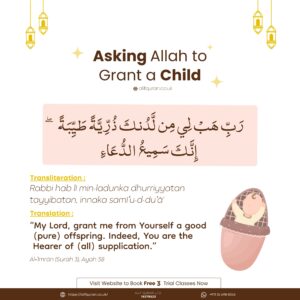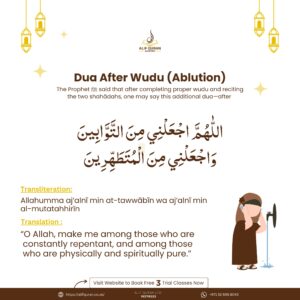QALQALAH LETTERS

Qalqalah Letters (The Bouncing Letters) in Tajweed
Qalqalah letters (قلقلة) is an essential rule in Tajweed, the science of Quranic recitation. The word Qalqalah means “bouncing” or “echoing.” It refers to a unique sound produced when certain letters carry a sukoon ( ْ ), which means they are in a silent state. Instead of being completely silent, these letters create a slight vibration or bounce when pronounced. This bouncing effect ensures clarity in pronunciation and prevents merging with the surrounding letters.
The Five Qalqalah Letters
There are five specific letters in the Arabic language that exhibit the Qalqalah effect. These letters are:
- ق (Qaaf)
- ط (Taa)
- ب (Baa)
- ج (Jeem)
- د (Daal)
To easily remember these letters, many students use the mnemonic قطب جد (Qutb Jad).
How Qalqalah Works
Whenever one of these five letters appears with sukoon (ْ) or at the end of a word in a stopped recitation, the Qalqalah rule applies. Instead of being pronounced with a hard stop, the letter slightly bounces or echoes off the tongue.
For example:
- أَحَدْ (Ahad) → The د (Daal) at the end is not abruptly stopped but rather bounces lightly.
- الْحَقُّ (Al-Haqq) → The ق (Qaaf) at the end produces an echoing sound.
Types of Qalqalah
Qalqalah is classified into two levels based on its intensity:
Small Qalqalah (Qalqalah Sughra – قلقلة صغرى)
- Occurs when the Qalqalah letter has sukoon in the middle of a word.
- The bounce effect is light.
- Example: يَجْعَلُ (Yaj’alu), where ج (Jeem) has sukoon and is lightly bounced.
Strong Qalqalah (Qalqalah Kubra – قلقلة كبرى)
- Happens when the Qalqalah letter appears at the end of a word, and the reciter stops on it.
- The bounce is stronger and clearer.
- Example: وَتَبَّ (Watabb), where ب (Baa) is pronounced with a stronger echo.
Importance of Qalqalah in Tajweed
- Prevents Merging: The bounce effect prevents the letters from blending into other sounds, maintaining clarity.
- Maintains Proper Articulation: Without Qalqalah, words may lose their distinct sound, affecting meaning and fluency.
- Ensures Beautiful Recitation: Quranic recitation follows precise rules to enhance the rhythm and melody, making the recitation more powerful.
Relation Between Qalqalah and Mustaliyah Letters
While Qalqalah letters bounce when pronounced with sukoon, Mustaliyah letters always have a heavy, bold sound due to Tafkheem (thickening). You can learn more about Mustaliyah Letters here to understand how these two concepts work together in Tajweed.
How to Master Qalqalah?
Listen to Quranic Reciters
- Studying how famous Qaris (reciters) apply Qalqalah helps in recognizing and perfecting its sound.
Practice with Individual Letters
- Repeat words containing Qalqalah letters to train your tongue to produce the bouncing effect naturally.
Understand the Context
- Not every occurrence of these five letters requires Qalqalah. It only applies when there is a sukoon or a stop at the end of a word.
Work with a Tajweed Teacher
- Learning under guidance ensures you pronounce Qalqalah correctly and maintain fluency in recitation.
FAQ
What are my child's strengths and areas for improvement?
Understanding your child’s academic and social skills helps identify where they excel and where they may need additional support.
How can I support my child's learning at home?
Teachers can offer suggestions for activities or resources to reinforce classroom learning, enhancing your child’s educational experience outside of school.
How does my child interact with peers and teachers?
Inquiring about your child’s social interactions provides insight into their relationships and social development within the school environment.
What are the key skills my child is expected to learn this year?
Knowing the essential grade-level skills in subjects like math and reading helps you understand academic expectations and monitor your child’s progress.









